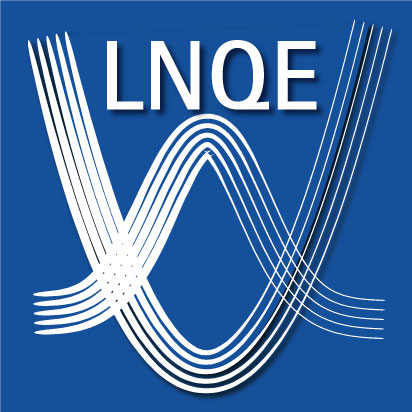LNQE-Kolloquium
Zeit: Mittwoch 09.02.2011 um 17:30 Uhr + anschließendes Get-Together
Ort: im Seminarraum + Foyer des LNQE-Forschungsbaus (Gebäude 3430), Schneiderberg 39, 30167 Hannover, Deutschland
Abstract
Keywords: Metal-Organic Framework, Porous Materials, Adsorption, Catalysis
In recent years, exciting developments have pushed the limits of materials performance to ever higher surface areas up to 7000 m2/g and pore sizes unattained so far in traditional porous solids such as zeolites or activated carbons. The rational design of porous materials using well defined building blocks (clusters) and linkers in the case of Metal-Organic Frameworks is now a tool-box, initially only aiming at well defined pore sizes in a crystalline structure but now more and more focussing on further refining the interior pore structure by post-functionalization or the introduction of specific linker molecules with well defined functionality [1-4].
Due to the extremely high gas uptake of novel porous materials they are recently discussed in energy storage applications for hydrogen storage and natural gas in mobile and stationary applications. While hydrogen is only stored to a significant degree at cryogenic temperatures, natural gas can be stored at room temperature in porous materials. An example is the new mesoporous DUT-6 (DUT = Dresden University of Technology) with a specific pore volume of 2 cm3/g with one of the highest capacity for methane storage observed so far.
By using chiral functionality in three-dimensional porous systems, enantioselective catalysts may be obtained with well defined pore structure. A unique feature of metal-organic frameworks (MOFs) is the occurrence of flexible behaviour causing the so called gate effect. Such solids show structural transformations at well defined gas pressure associated with giant gas uptake due to pore opening, a feature that is not observed for traditional porous solids such as zeolites and activated carbons.
Figure 1. The structure of DUT-6 showing one of the giant pores with inner sphere 23 Å in diameter.
Today a wide variety of materials from soft polymers to hard ceramics is available with high specific surface areas unattained so far and ordered pore structures. In the carbide-to-carbon transformation porous carbides can be now converted into carbon superadsorbers (CDC) with an inner surface area as high as 3000 m2/g. They are promising components in electrical energy storage in so called supercapacitors [5-6].
[1] N. Klein, I. Senkovska, K. Gedrich, U. Stoeck, A. Henschel, U. Mueller, S. Kaskel, Angew. Chem. 2009, 48, 9954-9957.
[2] S. Kaskel in Handbook of Porous Solids (Eds.: F. Schüth, K. Singh), Wiley-VCH, Weinheim, 2002, vol. 2, pp. 1190-1249.
[3] A. Henschel, K. Gedrich, R. Krähnert, S. Kaskel, Chem. Commun. 2008, 4192-4194.
[4] M. Lohe, M. Rose, S. Kaskel, Chem. Commun. 2009, 6056-6058.
[5] E. Kockrick, Ch. Schrage, L. Borchardt, N. Klein, M. Rose, I. Senkovska, S. Kaskel, Carbon 2010, 48, 1707-1717.
[6] Y. Korenblit, M. Rose, E. Kockrick, L. Borchardt, A. Kvit, S. Kaskel, G. Yushin, ACS Nano 2010 , 4, 1337-1344.







![[Translate to English:] Logo Zusammenland farbig](/fileadmin/_processed_/a/9/csm_zusammenland_4c_e78505eb7d.png)
![[Translate to English:] Logo Zusammenland-schwarzweiß](/fileadmin/_processed_/1/2/csm_zusammenland_sw_f06954e75c.png)